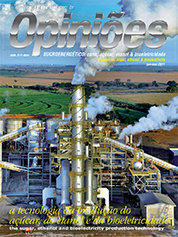José Antonio Sorge
Vice-President of Energy Management of Rede Comercializadora
Op-AA-27
Bioelectricity
Since 1987, when bioelectricity surpluses were traded for the first time, several incentives were implemented to foster sales through the electric network channel. The main such incentive is the minimum discount of 50% on grid utilization tariffs for energy generated from biomass, exclusively on power ratings below 30,000 KW supplied to the electric network by the generating plants.
The generators and the respective buyer consumers benefit from this program. The sale is made directly by the plants to the consumers that have contracted power ratings in excess of 500 KW, and also to the power traders that pass power on to the consumers. The benefit the traders bring to the process is that the generating plants are not required to have their own power trading organization in their units.
All it takes is to celebrate a Power Purchase Agreement - PPA with a trader and to have an active representative in the “CCEE” – Power Trading Chamber – in order to realize the required purchase and sale entries concerning the power generated. This is an important value aggregating component for the traders because the sale process is complex and requires knowledge of the electric industry’s regulations and their monitoring, as well as of the rules and procedures instituted by the “CCEE” and “ANEEL” – the National Electric Power Agency, which are dynamic and change constantly.
Most generation plants have preferred to sell surplus power directly to the traders, mainly in order to simplify the process and to allow concentration on few buyers. To have an idea of this practice’s success, Rede Comercializadora is the country’s largest trader (purchase and sale) of bioelectric power, with valid long-term contracts with 11 plants of the sugar and ethanol industry.
The company also provides support and intermediates the trading of surplus power to 65 independent consumers that can thus purchase bioelectricity. This is an expressive number, since there are 913 independent consumers qualified as “CCEE” agents, of which 432 are consumers with demands between 500 KW and 3000 KW, which can only purchase power from alternative sources. This is official “CCEE” data, according to a report of October 2010.
The seasonality of the generated energy (in the harvest period) is another important factor that makes the direct sale to consumers, which need energy supply in all 12 months of the year, somewhat difficult. The trader, as the intermediary of this process, can optimize his portfolio by resorting to other sources and he can also annualize the energy, increasing bioelectricity’s attractiveness. There are other sale options, such as the regulated energy auctions held by “ANEEL” through “CCEE”.
However, we have observed that sugar and ethanol mills have not shown much interest in this alternative. Apparently this is so because the maximum prices offered by the Government are way below producers’ expectations. The free market has offered better return on investment opportunities in comparison with the regulated alternative.
A fact that has greatly concerned us in the electric industry has been the dwindling of investment flows for bioelectricity that one observed following the world economic crisis in September 2008, a natural process given the uncertainties the sub-prime crises contributed to the business world and the economy. Fortunately, one can already see that the interest of the main plants in the industry in making long-term investments in bioelectricity is rebounding.
One should also point out that expectations concerning energy prices have changed radically since the beginning of the aforesaid crisis. In 2008, in long-term contracts, prices of bioelectricity were at a level 20 to 30% higher in relation to those currently being practiced in the market. What we can state is that current prices better reflect the industry’s reality than those one observed almost 3 years ago.
There are no signs that we will be returning to the levels of that period, in light of reduced consumption expectations resulting from the economic crisis. Energy consumption in Brazil, in 2009, declined by 1.1% in comparison with 2008, according to data of “EPE”, resulting in considerable energy surpluses.
This fact, in addition to good storage capacity in the reservoirs of the country’s main hydroelectric plants, resulted in an overall decline of price expectations in the free market, in which consumers and traders have been successful in achieving highly competitive price levels. One can conclude that what occurred until 2008 resulted from a price bubble, which allowed producers that celebrated contracts at that time to reap the benefits of high profitability rates from their bioelectricity business ventures.
Reality today, albeit different from what it was back then, allows access to new technologies and productive negotiations, resulting in rates of return that make most power generation projects feasible. This is what we have seen in the many contacts and negotiations we are involved in with bioelectricity producers.




